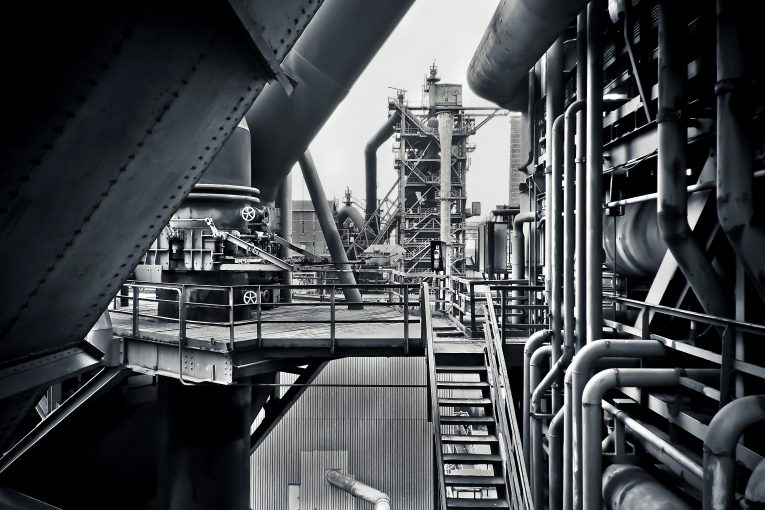
The fourth industrial revolution or 4IR builds on the digital revolution and combines multiple technologies that are leading to significant shifts in the economy, business, society, and individually. It is characterized by a fusion of technologies that is blurring the lines between the physical, digital, and biological spheres. In practice, it is the idea of smart factories in which machines are augmented with web connectivity and connected to a system that can visualize the entire production chain and make decisions on its own. (Schwab, 2016)
According to Schwab, the fourth industrial revolution is not only changing the “what” and the “how” of doing things but also “who” we are, what it means to be human. It also includes the transformation of entire systems, across and within countries, companies, industries, and society as a whole. (Schwab, 2016)
Up to recent days, we have faced three phases of industrial revolution. Firstly, began with steam and water. Then, electricity and assembly lines discovered. After that, computerization started in 1969. Nowadays, even though there is not an exact period yet, we are entering the discourse of the fourth industrial revolution coming with more advanced technology.
Every industrial revolution provided positive and negative impact to our society. One of the major impacts that we have experienced in the last industrial revolution was the employment issue. It is not only about the job losses but also transformation of the nature of the works. This would be the grave issue in the ongoing (upcoming) industrial revolution. It is predicted as much as 47% of jobs may be automated away in the future. Moreover, 65% of children entering primary school today will have jobs in categories that don’t yet exist. (World Economic Forum, 2017)
Currently, in ASEAN, the top main job family is farming, fishing, and forestry. Looking at the current job family in this region plus the economic and digital technology development, one question arises, has ASEAN entered the fourth industrial revolution yet? I would argue that ASEAN is still in the stage of third industrial revolution. But however, the revolution happening in the other part of the world, will surely affect ASEAN. A report on The Future of Jobs from the World Economic Forum found that the 4IR will lead to a net loss of over 5 million jobs in 15 major developed and emerging economies. Therefore, ASEAN has to adjust to survive in the changing global world.
As the fourth industrial revolution comes with the more advanced technology, ASEAN needs to prepare the upcoming workers with the compatible skills and educations. Many scholars suggest the developing countries investing in areas such as STEM (science, technology, engineering, and mathematics) education as the future jobs will be mostly related to those areas.
Data on the Human Capital Report by World Economic Forum showed that the distribution of the degree holders in ASEAN has bigger number in social and humanities area. Universities in ASEAN produced only 24% STEM-related graduates (5% in science, 19% in engineering, manufacturing, construction). Therefore, for ASEAN to be more competitive in the 4IR, ASEAN needs to risen the number of students studying in STEM education.
This situation is not only faced by ASEAN but also the US. For a comparison, in the US alone there are more than 500,000 open technology jobs, but universities produce only 50,000 science graduates each year. Therefore, there is a gap between the demand and supply of labour to be solved globally.
To solve this problem in general, the business sector and academia need to sit together and discuss about the future of jobs in the 4IR to minimize the gap between supply and demand of future labour market. What universities could do is to reconsider and reshape the curriculum to respond the changing environment of works to prepare the graduates with the precise skills and educations needed in the future. In the other side, business sector needs to study what are the criteria of jobs in the future and discuss it with the higher education institution. But however, from the study done by World Economic Forum, it appears that business actors do not believe that these technologies will have advanced significantly enough by the year 2020 to have a more widespread impact on global employment levels.
University is a place to educate people for the purpose of knowledge and enlighten people. However, higher education is also one of the main actors globally in reducing the disadvantage that the 4IR might cause. Universities are key platforms to prepare the future workers and also to educate people to keep the revolution in track to benefit all. And that every university can have a direct role in creating economic opportunity for millions of people by reshaping the current curriculum for existing and potential talent to adapt with the ongoing change.
The 4IR will create jobs disruption. Therefore, there will be discrepancy between the demand and supply of the future labour market. Higher education as the bridge to the working environment is seen as one of the main stakeholders in preventing the great loss (jobs) that might cause. Business sector and academia need to discuss together to solve this problem. In ASEAN, it is suggested to increase the number of students studying in the STEM education as the 4IR will demand more human capital in science and technology. Besides, higher education in ASEAN also needs to rethink and reshape the current curriculum to prepare graduates in tune with the change that the 4IR brings. Generally, both business and academia need to cultivate a lifelong learning in every individual to adapt and adjust with the upcoming changes.
—
This article was written by Walid Ananti Dalimunthe from the ASEAN Studies Forum.
